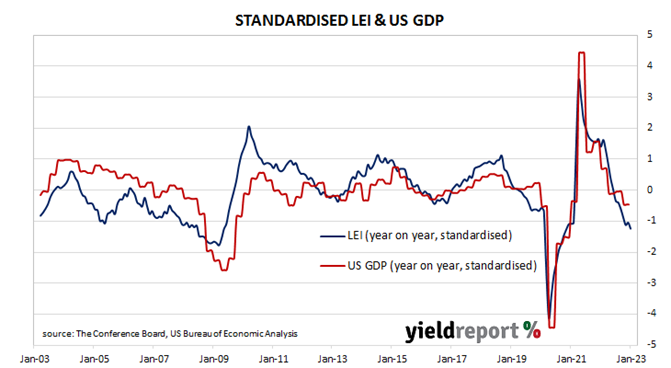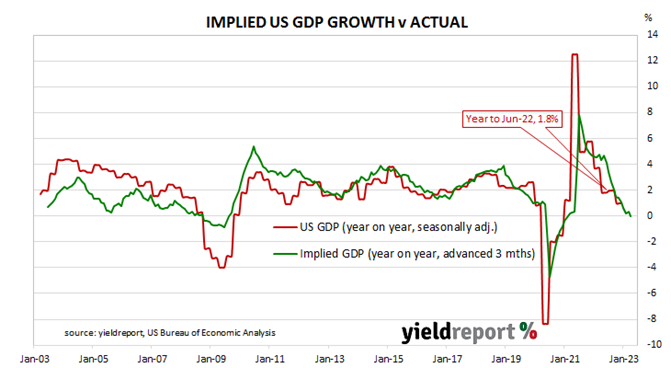Summary: Conference Board leading index down 0.3% in January, in line with expectations; signals recession even as US labour market indicators remain robust; regression analysis implies zero US GDP growth to April.
The Conference Board Leading Economic Index (LEI) is a composite index composed of ten sub-indices which are thought to be sensitive to changes in the US economy. The Conference Board describes it as an index which attempts to signal growth peaks and troughs; turning points in the index have historically occurred prior to changes in aggregate economic activity. Readings from March and April of 2020 signalled “a deep US recession” while subsequent readings indicated the US economy would recover rapidly. More recent readings have trended lower, implying implied lower US GDP growth rates.
The latest reading of the LEI indicates it decreased by 0.3% in January. The result was in line with expectations but higher than December’s revised figure of -0.8%.
“While the LEI continues to signal recession in the near term, indicators related to the labour market, including employment and personal income, remain robust so far” said Ataman Ozyildirim, Senior Director, Economics, at The Conference Board. “Nonetheless, The Conference Board still expects high inflation, rising interest rates and contracting consumer spending to tip the US economy into recession in 2023.”
US Treasury bond yields moved lower on the day. By the close of business, the 2-year Treasury yield had lost 2bps to 4.63% while 10-year and 30-year yields both finished 8bps lower at 3.82% and 3.87% respectively.
In terms of US Fed policy, expectations of higher federal funds rates over the next 12 months firmed. At the close of business, contracts implied the effective federal funds rate would average 4.665% in March, 9bps higher than the current spot rate, and then climb to an average of 4.865% in April. May futures contracts implied a 5.08% average effective federal funds rate while December contracts implied 5.13%.
Regression analysis suggests the latest reading implies a zero year-on-year growth rate in April, down from March’s revised figure of 0.3%.



